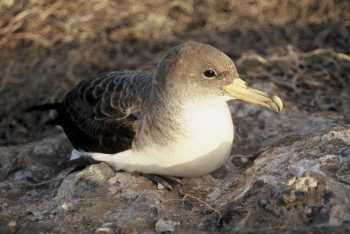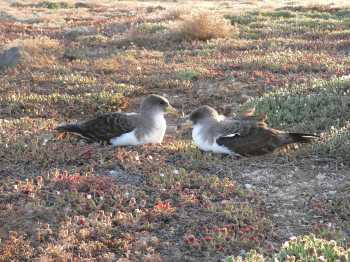Paulo Catry (Eco-Ethology Research Unit, ISPA, Lisbon, Portugal) and colleagues, publishing in the open-access journal PLoS ONE , have looked at the routes Cory's Shearwaters Calonectris diomedea (a potential ACAP candidate species) from different breeding localities take to their wintering grounds.
The paper's abstract follows:
"Although seabirds that are trans-equatorial migrants show apparently broad overlap among populations in the nonbreeding season, such large-scale pattern may conceal subtle but nevertheless key differences in migratory behaviour. These specializations could reflect adaptation to different environments during the breeding season, carry-over effects from the breeding to the nonbreeding period, or asymmetries in competitive ability of birds of different origin. We compared the migratory and wintering behaviour of Cory's shearwaters Calonectris diomedea nesting in Berlengas and in the Selvagens, two colonies in contrasting oceanographic environments, separated by ca. 1200 km. Although no differences were found in winter distribution, there was a marked divergence in timing, route and the use of staging areas during the postbreeding (autumn) migration. Birds from Berlengas typically travelled to oceanic waters in the North Atlantic for an extended stopover, whereas those from Selvagens rarely did so. In the South Atlantic, birds from Selvagens spent more time in flight, perhaps because they had higher energy and nutrient requirements for feather replacement compared to birds from Berlengas, which moult more flight feathers during breeding. Stable isotope analyses of feathers suggested that this variation in activity patterns was unrelated to trophic ecology. Differences in migration routes and stopovers may expose populations to distinct threats, and should be taken into consideration when defining units for conservation purposes and developing appropriate management strategies."


Cory's Shearwaters in the Selvagens Islands
Photographs by Paulo Catry
Reference: Catry, P., Dias, M.P., Phillips, R.A. & Granadeiro, J.P. 2011. Different means to the same end: long-distance migrant seabirds from two colonies differ in behaviour, despite common wintering grounds. PLoS ONE 6(10): e26079. doi:10.1371/journal.pone.0026079.
With thanks to Paul Catry.
John Cooper, ACAP Information Officer,11 November 2011

 English
English  Français
Français  Español
Español